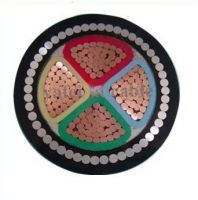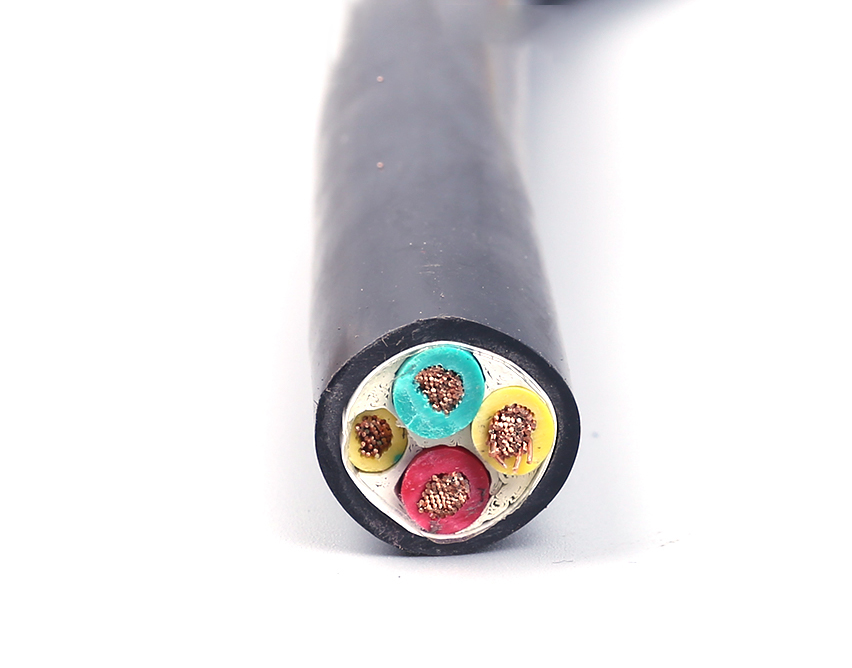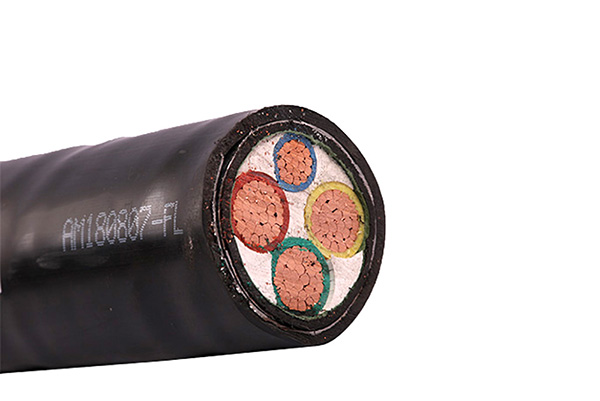The low-voltage power grid in urban residential areas generally adopts the three-phase four wire system. The four core cable used in the low-voltage power grid, except for the three-phase conductor, is called the neutral wire. It can pass through the unbalanced current of three-phase AC and has the function of protective grounding. Three core cable and one conductor cannot be used as neutral wire to connect to three-phase four wire low-voltage power grid, because in this case, part of the three-phase unbalanced current will pass through the armor of three-core ABC Cable, which will heat the armor layer and reduce the current carrying capacity of the cable.

The measured load data of low-voltage power grid in some sections show that the difference of three-phase load may be several times. Due to the unbalanced power load of household appliances and the different timing of household appliance load, the three-phase load is unbalanced, which is difficult for the power department to grasp and manage. At the beginning of the 20th century, in some low-voltage power grids in urban residential areas, accidents of ACSR Cable damage caused by neutral line overload occurred from time to time, especially the low-voltage cable insulated with polyvinyl chloride (PVC), sometimes even burning out the PVC insulation of the whole cable due to overheating. After analysis, the cause of the accident is that when the unbalanced current of the power grid is too large, the neutral line of the low-voltage cable is seriously overloaded due to too small section. Therefore, the power department requires cross-linked polyethylene as the insulation of low-voltage cables, and appropriately increase the cross-section of low-voltage cables. At the same time, the cable factory is required to produce four core low-voltage cables with equal cross-section. Under the condition of extremely unbalanced three-phase load, the cable neutral line can have sufficient ability to pass through unbalanced current.

3.5 number of power cable cores
3.5.1 when the neutral point of 1kV and below power supply is directly grounded, the number of cable cores of three-phase circuit shall comply with the following provisions:
1. When the protective conductor is connected with the exposed conductive part of the power receiving equipment for grounding, the following provisions shall be met:
1) For TN-C system, when the protective conductor and neutral conductor share the same conductor, 4-core cable shall be selected;
2) For TN-S system, when the protective conductor and neutral conductor are independent, 5-core cable should be selected; When the provisions of article 5.1.16 of this standard are met, it can also be composed of 4-core cable and another protective conductor laid close to the phase conductor;
3) When TN-S system is not equipped with neutral conductor or the circuit does not need neutral conductor to be led to the power receiving equipment, 4-core cable should be selected; When the provisions of article 5.1.16 of this standard are met, the 3-core cable can also be composed of another protective conductor laid close to the phase conductor.
2 for TT system, when the protective grounding of the exposed conductive part of the power receiving equipment is independent of the neutral point grounding of the power supply system, 4-core cable shall be selected; When the neutral conductor is not provided or the circuit does not need the neutral conductor to be led to the power receiving equipment, 3-core cable should be selected.
3 for TN system, when the exposed conductive parts of power receiving equipment are reliably connected to the public grounding grid distributed in the whole plant and station, 3-core cables should be selected for motors and other electrical equipment that are fixedly installed and do not need neutral conductors.
4 when the section of phase conductor is greater than 240mm2, single core cable can be selected, and the section of neutral conductor and protective conductor of its circuit shall comply with the provisions of articles 3.6.9 and 3.6.10 of this standard.
3.5.2 when the neutral point of 1kV and below power supply is directly grounded, the number of ACAR Cable cores of single-phase circuit shall comply with the following provisions:
1. When the protective conductor is connected with the exposed conductive part of the power receiving equipment for grounding, the following provisions shall be met:
1) For TN-C system, when the protective conductor and neutral conductor share the same conductor, 2-core cable shall be selected;

2) For TN-S system, when the protective conductor and neutral conductor are independent, 3-core cable should be selected; When the provisions of article 5.1.16 of this standard are met, it can also be composed of 2-core cable and another protective conductor laid close to the phase conductor.
2. For TT system, when the protective grounding of exposed conductive parts of power receiving equipment is independent of the neutral point grounding of power supply system, 2-core cable shall be selected.
3 for TN system, when the exposed conductive parts of power receiving equipment are reliably connected to the public grounding grid distributed in the whole plant and station, the fixed electrical equipment should use 2-core cable.
3.6 conductor section of power cable
3.6.9 when the neutral point of 1kV and below power supply is directly grounded, the section of cable neutral conductor or protective grounding neutral conductor of three-phase four wire system shall not be less than the minimum section required for continuous operation according to the maximum unbalanced current of the line; The circuit affected by harmonic current shall comply with the following provisions:
1. For the circuit with gas discharge lamp as the main load, the neutral conductor section shall not be less than the phase conductor section.
2 when there is high-order harmonic current, the current of neutral conductor shall be calculated and the effect of harmonic current shall be included. When the neutral conductor current is greater than the phase conductor current, the cable phase conductor section shall be selected according to the neutral conductor current. When there is harmonic current in the three-phase balance system, and the materials of neutral conductor and phase conductor in 4-core or 5-core cable are the same and the section is the same, the reduction coefficient of cable ampacity shall be determined according to the provisions of table 3.6.9.
